Related Research Articles
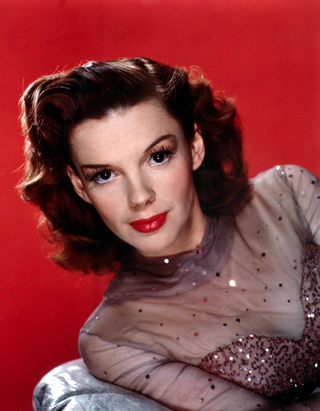
Judy Garland was an American actress, singer, and vaudevillian. She attained international stardom and critical acclaim as an actress in both musical and dramatic roles, as a recording artist, and on the concert stage. Renowned for her versatility, she received a Golden Globe Award, a Special Tony Award and was one of twelve people in history to receive an Academy Juvenile Award.

The ruby slippers are a pair of magical shoes worn by Dorothy Gale as played by Judy Garland in the 1939 Metro-Goldwyn-Mayer musical film The Wizard of Oz. Because of their iconic stature, they are among the most valuable items of film memorabilia. Several pairs were made for the film, though the exact number is unknown. Five pairs are known to have survived; one pair was stolen from a museum in 2005 and recovered in 2018.
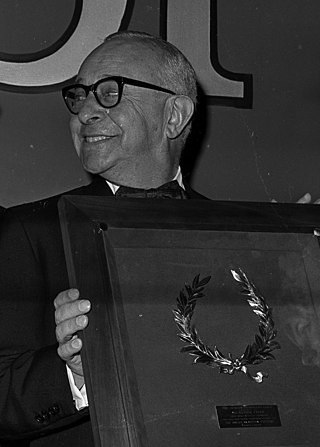
Arthur Freed was an American lyricist and a Hollywood film producer. He won the Academy Award for Best Picture twice, in 1951 for An American in Paris and in 1958 for Gigi. Both films were musicals, and both were directed by Vincente Minnelli. In addition, he produced the film Singin' in the Rain, the soundtrack for which primarily consisted of songs he co-wrote earlier in his career.

Lorna Luft is an American actress and singer. She is the daughter of Judy Garland and Sidney Luft, the sister of Joey Luft and the half-sister of Liza Minnelli.

"Over the Rainbow", also known as "Somewhere Over the Rainbow", is a ballad by Harold Arlen with lyrics by Yip Harburg. It was written for the 1939 film The Wizard of Oz, in which it was sung by actress Judy Garland in her starring role as Dorothy Gale. It won the Academy Award for Best Original Song and became Garland's signature song.
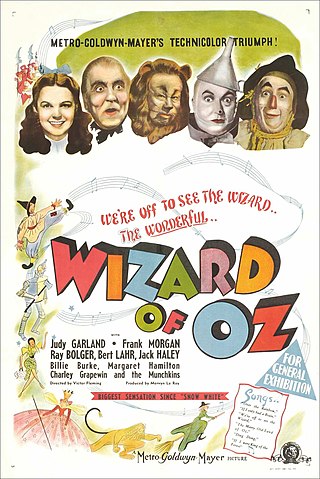
The Wizard of Oz is a 1939 American musical fantasy film produced by Metro-Goldwyn-Mayer (MGM). An adaptation of L. Frank Baum's 1900 children's fantasy novel The Wonderful Wizard of Oz, it was primarily directed by Victor Fleming, who left production to take over the troubled Gone with the Wind. It stars Judy Garland, Frank Morgan, Ray Bolger, Bert Lahr, Jack Haley, Billie Burke and Margaret Hamilton. Noel Langley, Florence Ryerson and Edgar Allan Woolf received credit for the screenplay, while others made uncredited contributions. The music was composed by Harold Arlen and adapted by Herbert Stothart, with lyrics by Edgar "Yip" Harburg.
A "friend of Dorothy" (FOD) is a code word for a gay man, first used in LGBT slang. Stating that, or asking if someone is a friend of Dorothy, is a furtive way of suggesting sexual orientation while avoiding hostility. The term was likely based on the character Dorothy Gale of the Oz series of novels, which have been interpreted as including much queer subtext. Actress Judy Garland, who portrayed Dorothy in the 1939 Wizard of Oz film, is considered a gay icon. Writer and critic Dorothy Parker is thought to be another potential origin of the term. The "friend of Dorothy" code word was commonly used throughout the 20th century, but its use has declined in recent decades as LGBT acceptance has advanced.

That's Entertainment! is a 1974 American compilation film released by Metro-Goldwyn-Mayer to celebrate the studio's 50th anniversary. The success of the retrospective prompted a 1976 sequel, the related 1985 film That's Dancing!, and a third installment in 1994.
AFI's 100 Years...100 Songs is a list of the top 100 songs in American cinema of the 20th century. The list was unveiled by the American Film Institute on June 22, 2004, in a CBS television special hosted by John Travolta, who appeared in two films honored by the list, Saturday Night Fever and Grease. The list was created by a panel of jurors selected by AFI, who voted from a list of 400 nominated songs.
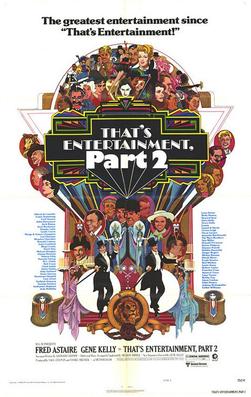
That's Entertainment, Part II is a 1976 American compilation film released by Metro-Goldwyn-Mayer and a sequel to That's Entertainment! (1974). Like the previous film, That's Entertainment, Part II was a retrospective of famous films released by MGM from the 1930s to the 1950s. Some posters for the film use Part 2 rather than Part II in the title.
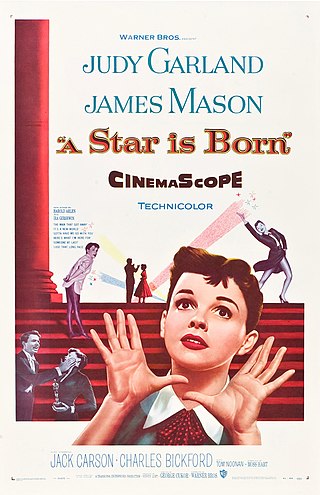
A Star Is Born is a 1954 American musical tragedy film directed by George Cukor, written by Moss Hart, and starring Judy Garland and James Mason. Hart's screenplay is an adaptation of the original 1937 film, based on the original screenplay by Robert Carson, Dorothy Parker and Alan Campbell, and from the same story by William A. Wellman and Carson, with uncredited input from six additional writers—David O. Selznick, Ben Hecht, Ring Lardner Jr., John Lee Mahin, Budd Schulberg and Adela Rogers St. Johns.
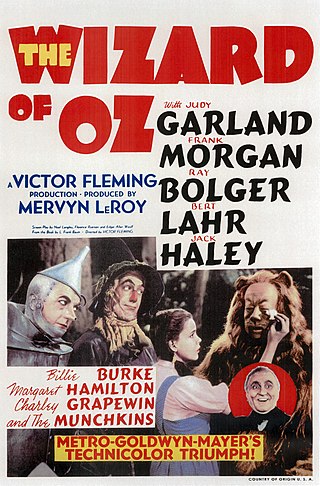
The Wizard of Oz, produced by Metro-Goldwyn-Mayer (MGM), was first released in theatres on August 15, 1939. The film was then re-released nationwide in 1949, and once more in 1955. The Wizard of Oz was broadcast on television for the first time on Saturday, November 3, 1956. The film was shown as the last installment of the CBS anthology series Ford Star Jubilee. Since that telecast, The Wizard of Oz has been shown by CBS, NBC, The WB, and several of Ted Turner's national cable channels. The film has never been licensed to any local affiliate broadcast TV station. From 1959 to 1991, the showing of The Wizard of Oz was an annual tradition on American commercial network television. During these years, the film was always shown as a television special.

The Wonderful Wizard of Oz is a 1900 children's novel written by American author L. Frank Baum. Since its first publication in 1900, it has been adapted many times by L. Frank Baum and others: for film, television, theatre, books, comics, games, and other media.

Judy Garland signed her first recording contract at age 13 with Decca Records in late 1935. Garland began recording albums for Capitol Records in the 1950s. Her greatest success, Judy at Carnegie Hall (1961), was listed for 73 weeks on the Billboard 200 chart, was certified Gold, and took home five Grammy Awards.

American actress and singer Judy Garland (1922–1969) is widely considered as a gay icon. The Advocate has called Garland "The Elvis of homosexuals". The reasons frequently given for her standing as an icon among gay men are admiration of her ability as a performer, the way her personal struggles seemed to mirror those of gay men in America during the height of her fame, and her value as a camp figure. Garland's role as Dorothy Gale in The Wizard of Oz is particularly known for contributing to this status. In the 1960s, when a reporter asked how she felt about having a large gay following, Garland replied, "I couldn't care less. I sing to people!"
Ronald Haver was an American film historian, preservationist and author. For over twenty years, he was director of Film Programs at the Los Angeles County Museum of Art.

In the 1939 film The Wizard of Oz, American entertainer Judy Garland wore a blue-and-white dress in her seminal role as Dorothy Gale throughout the film. Also nicknamed the "Dorothy dress", it was designed for the film by MGM costume designer Adrian, who based it on L. Frank Baum's description of Dorothy's dress in his children's book The Wonderful Wizard of Oz (1900). Several copies of the dress were made for Garland to wear during production, which were styled to make her appear younger and thinner on camera. The complete outfit consists of a checked blue-and-white gingham pinafore worn over a cream-colored blouse. It is often paired with ruby slippers, another famous clothing item from the film.

Dorothy Tuttle was an American dancer and performer, primarily working at Metro-Goldwyn-Mayer in film musicals of the 1940s.
References
- ↑ "Following the Yellow Brick Road with Author/Historian John Fricke". Archived from the original on 2016-03-04. Retrieved 2012-09-20.
- ↑ "Watch the Documentary! - Return to Oz: The Joy That Got Away". Archived from the original on 2011-08-30. Retrieved 2011-09-10.